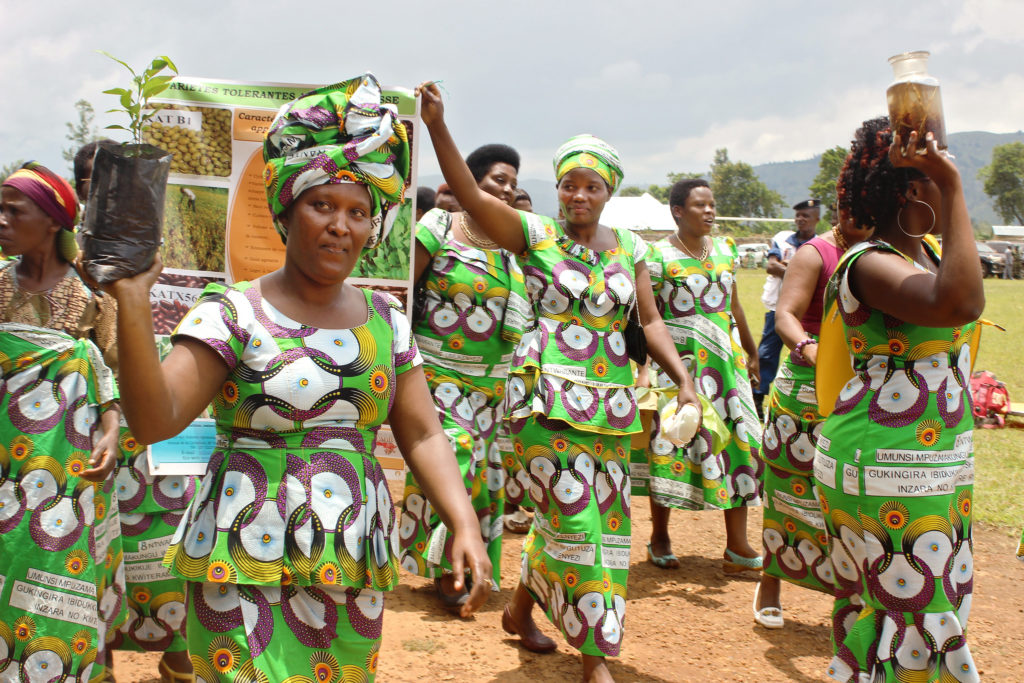The UN released a report this month on climate change and agriculture that showed women farmers bear the brunt of the crisis—and may be the key to limiting its impact. But that’s only possible if there is gender equality in the agriculture sector.

Most of the global conversations on women’s empowerment in the agriculture sector have been about how women can contribute to food security and poverty reduction, and how we need to organize them and build their capacity to play this role better and more effectively.
This is not enough.
What if instead our approach to gender inequality in these sectors stopped being about “fixing women,” but instead became about “fixing the agriculture and food system” so that it better serves women? What would that look like, conceptually and in practice? What if we lifted the burden of changing the world from women and instead created a world that works for them?
I know the answer. It would require a focus on four key elements of gender equality in combination—none of which are new, but all of which have impacts that have been limited in the agriculture sector, as they are often implemented individually and not in combination. That, too, must change.
We need to focus on increasing access to and control over resources and income by women. Research shows that women’s ownership of resources can increase women’s ability to bargain and can give voice to women within households, and yet critical gaps in access to resources exist between men and women. Less than seven percent of Kenyan women are registered land owners, compared with about 30 percent of men. In developing countries, women are 20 percent less likely than men to have an account at a formal financial institution—and globally, the gender gap remains in place at seven percentage points globally and nine points for developing countries.
Having a bank account and access to credit is a crucial step towards rising above poverty, granting women greater control over their finances. Interventions that combine agriculture programming with increasing access to resources are more likely to have impacts on women, compared to those that focus on agriculture alone.
We must also address the underlying causes of gender inequality, including harmful gender and social norms and structural barriers. These gender and social norms define women’s and men’s roles; dictate responsibilities in households, markets and public life in their communities; and can be a big hinderance to women’s empowerment.
Those working in the agriculture sector have not always found an entry point for addressing gender and social norms—but combining technical and social innovations could lead to improved food security and gender equality. In Malawi and Zambia, combining interventions to reduce fish loss and community theatre to address harmful social norms led to a 45 percent reduction in amongst those agreeing with the statement women should not be involved in fishing. In Kenya and Vietnam, combining household dialogues with efforts to increase women’s business skills, connect women to markets and build opportunities for women’s leadership has led to positive shifts towards gender equitable attitudes, relations and behavior in the households including sharing of household tasks.
We must, of course, also build women’s leadership in agriculture at all levels—from policy to research to farmer organizations. There is robust evidence in the private sector on the value of gender diversity in leadership: one study of 1,069 leading firms across 35 countries and 24 industries found that gender diversity relates to more productive companies, in terms of both market value and revenue. Yet in a country like Ethiopia, where 85 percent of the population depends on agriculture and where cooperatives and where cooperatives are critical for accessing resources, only 20 percent of cooperative members are women and even fewer are found in management positions.
While such studies do not exist in the agriculture sector, combining agricultural interventions with building women’s leadership is critical to their empowerment. Programs like the African Women in Agriculture Research and Development and the African Institute for Mathematical Sciences are at the forefront of building women’ leadership in research.
We also need to make agricultural policies and institutions gender equitable and responsive to the needs of women. Addressing gender inequalities in the formulation and implementation of food and nutrition security policies is essential, if policies are to be effective and socially sustainable. An evaluation by the Food and Agriculture Organization of the UN shows that incorporating gender equality principles in policy planning results in a greater achievement of the policy goals, increased efficiency in policy implementation, improved prioritization of policy issues to be addressed in the policy formulation and greater and more effective participation of stakeholders to achieve enduring positive impacts on the lives and economic potential of rural people across genders—lifting up women, men, girls and boys.
These interventions in isolation are key contributors to women’s empowerment—but when applied in combination, they can lead to long-term sustainable change. Land policies can favor women, but if cultural norms against women’s ownership of land do not change, and women are not leading the change process themselves, the outcomes can be short term and unsustainable.
Ultimately, for food systems to truly empower women, we must shape them in a multi-layered way so that they contribute to equitably transforming gender and social relations.





